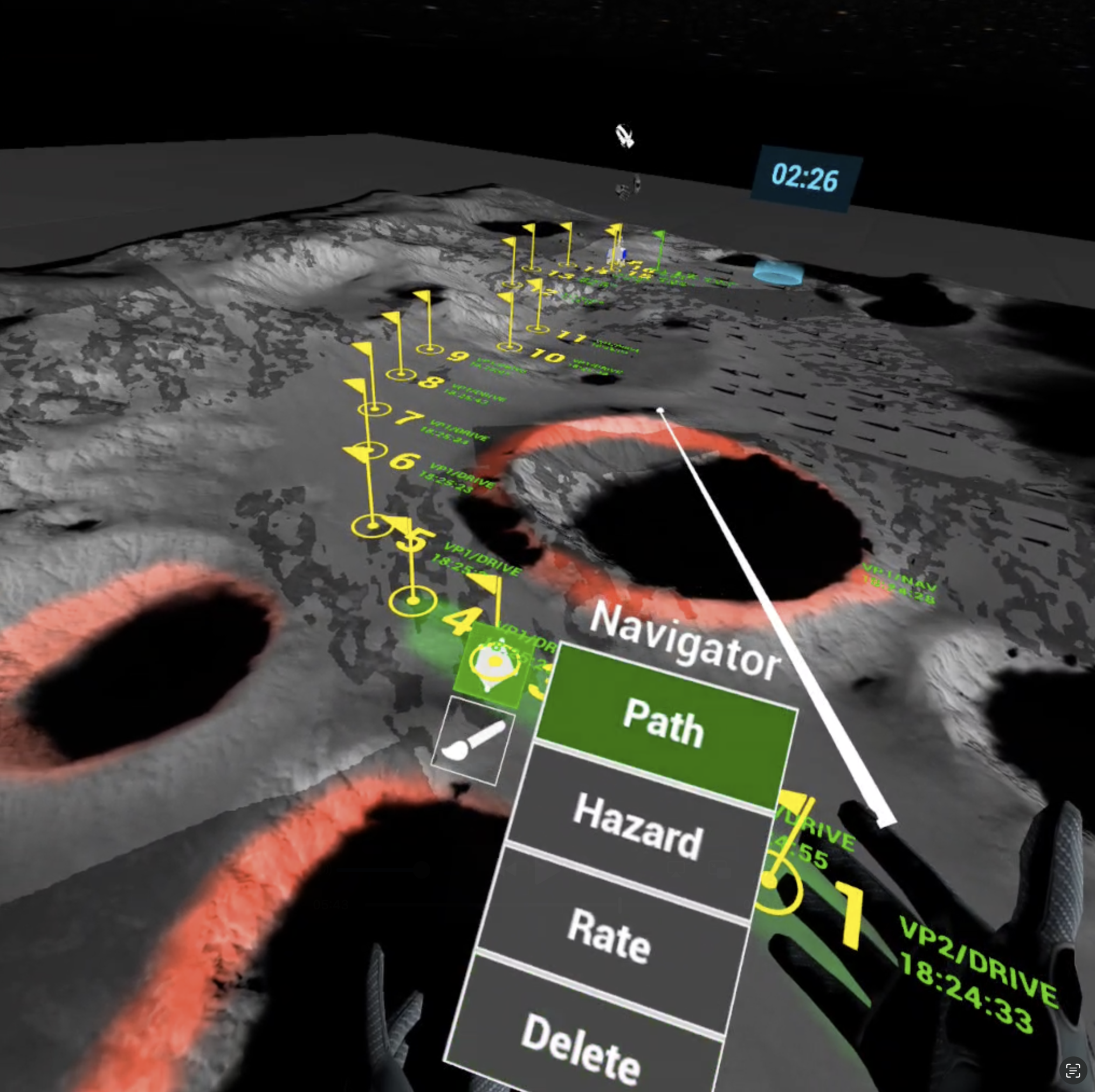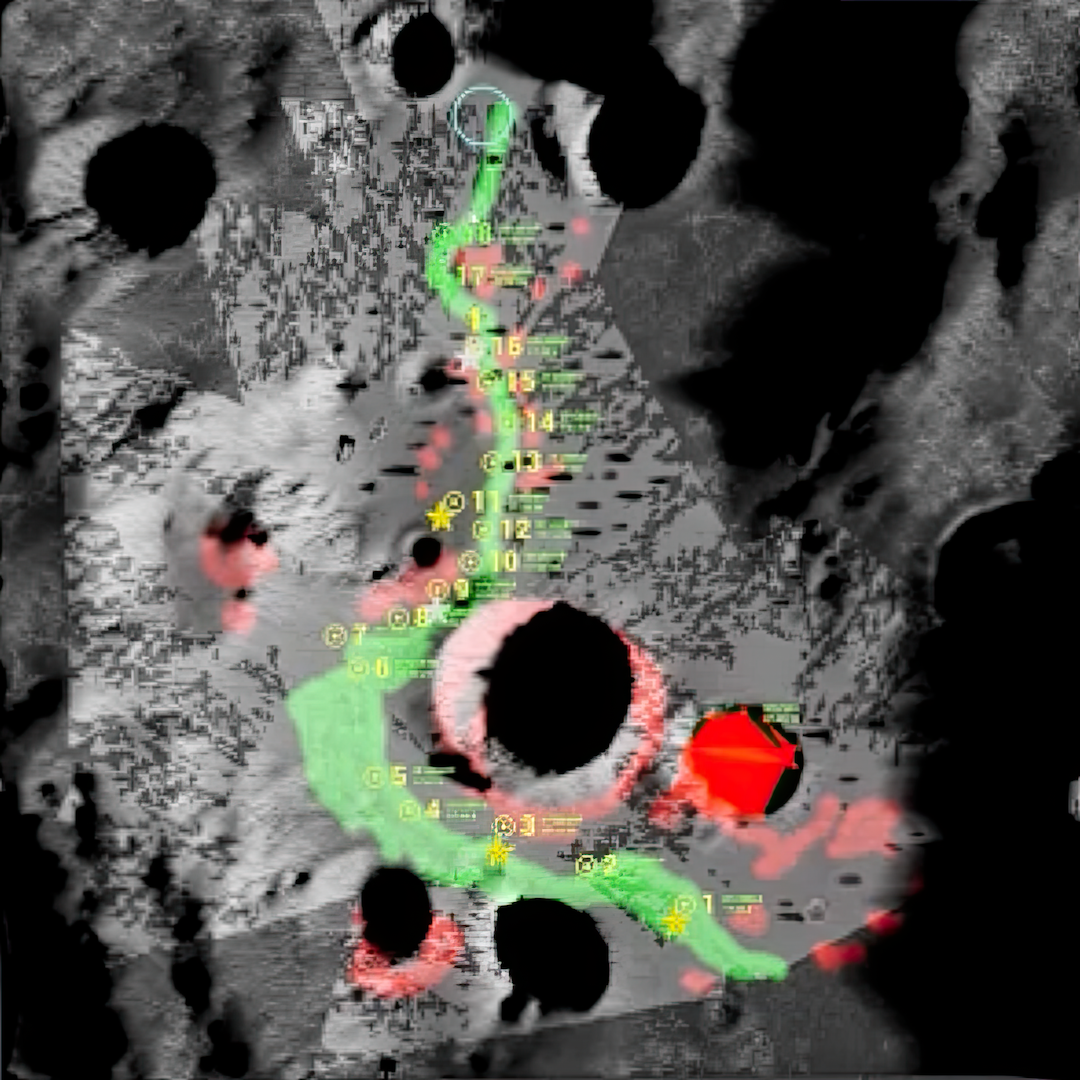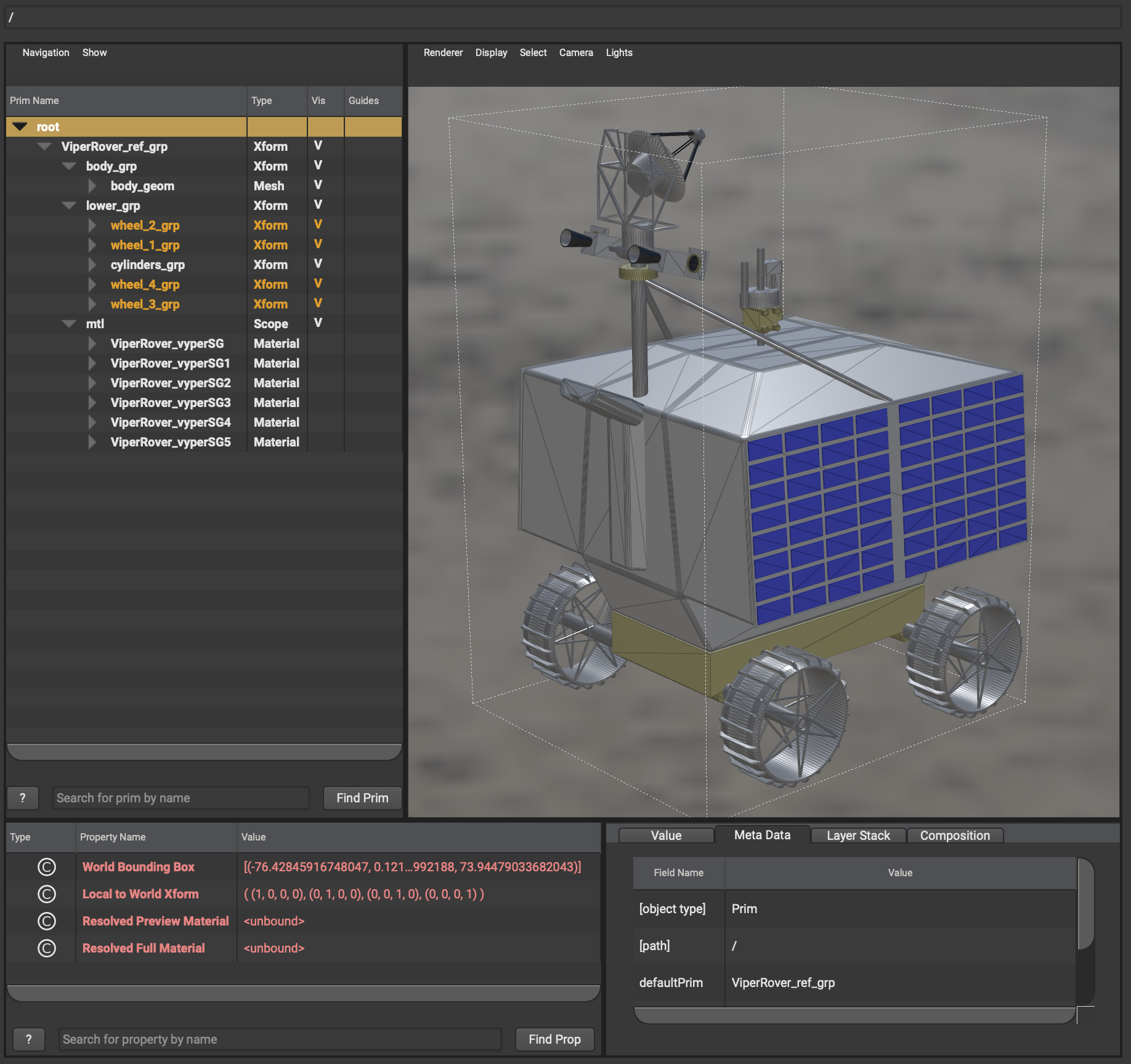NASA Immersive Digital Twins
Extending OpenUSD for XR twins across NASA science, engineering and operations
Overview
New NASA missions are extending human operations deeper into space, with greater complexity, limited ground support, and higher tempo. To prepare, NASA needs digital twins and XR environments that unify CAD, terrain, geospatial, planning, and science data into immersive, traceable simulations. Current XR tools are fragmented, vendor-specific, and break the link back to source data.
With support from a NASA STTR grant, DigitalFish is extending OpenUSD to meet this challenge. Our work—USDI-XRED—adds schemas for interactivity, XR constructs, and data interchange, along with validation tools to ensure content runs predictably across devices. Partnering with Cornell University’s DAIL lab, we are also running user studies on novel immersive interfaces for mission planning and operations. Together these efforts provide NASA with a standards-aligned foundation for training, rehearsal, and real-time decision support.
Impact
Phase I demonstrated feasibility through RoleQuorum VR, a lunar rover simulator built with NASA VIPER mission data. Tests with research subjects showed structured XR collaboration improved safety and decision-making under time pressure.
At the same time, DigitalFish advanced the Alliance for OpenUSD (AOUSD) ecosystem through active participation in standards development. We also provide leadership in the Industrial & Engineering Digital Twins Interest Group (IEDT-IG), ensuring NASA’s mission-driven requirements are represented in the evolution of global standards.
By uniting mission data in OpenUSD, validating it across devices, and aligning it with AOUSD standards, USDI-XRED is giving NASA and industry reusable XR infrastructure: immersive environments that are interoperable, traceable, and mission-ready.
DigitalFish Contributors
Dan Herman (PI)
Josh Qualtieri
Camille Cellucci
Ty Clark
Dillon Bailey
Blanca Montoya
Neil Okamoto
Cornell University
Saleh Kalantari (RI-PI)
Armin Mostafavi
Bill Tong Xu
Client
NASA




